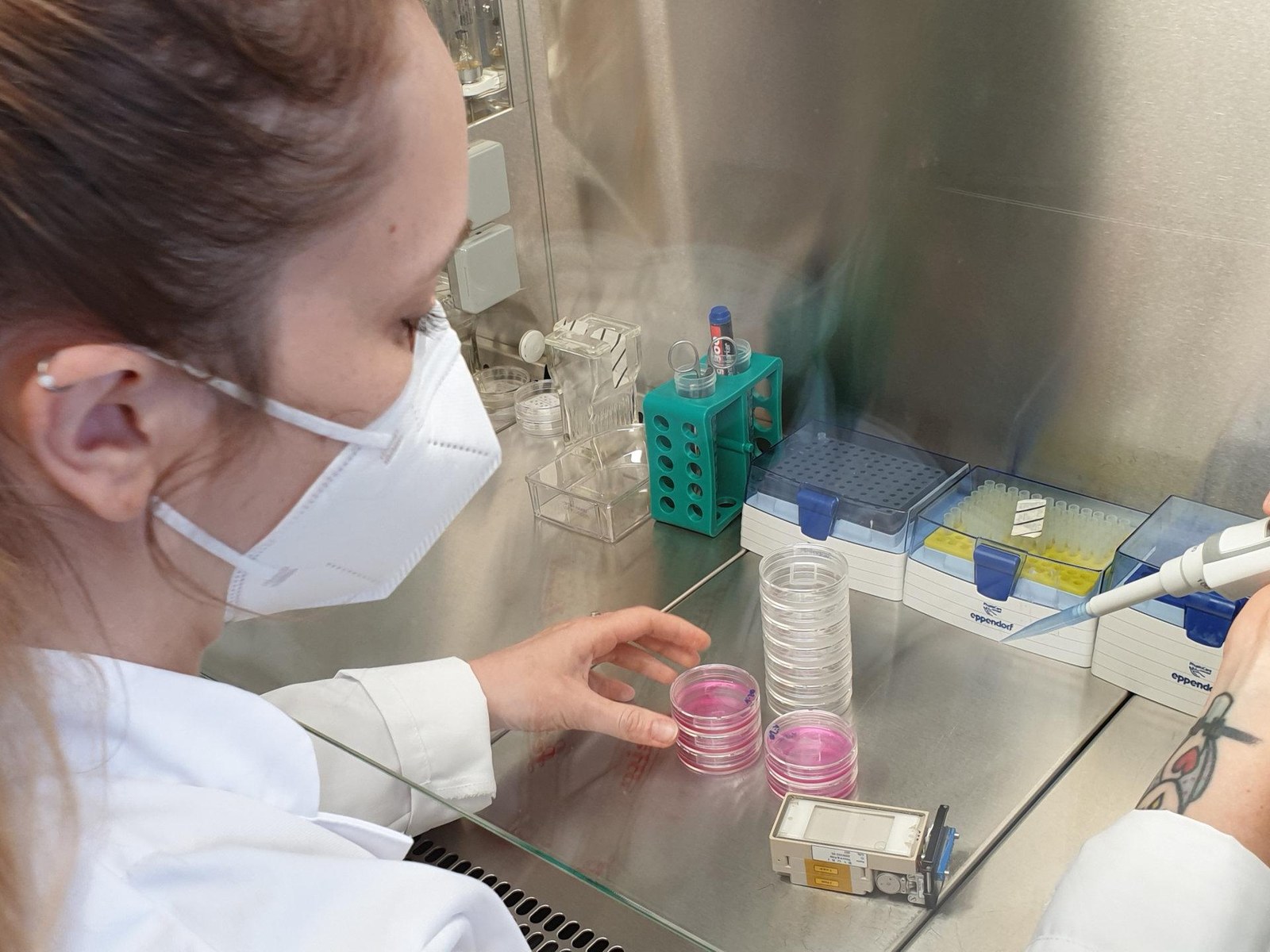Cellbox-3 launches biomedical experiments to the ISS



- Molecular biology experiments from Charité Berlin and Goethe University Frankfurt will be launched to the International Space Station (ISS) on 6 November 2022 as part of Cellbox-3.
- The biomedical research will investigate the behaviour of immune, nevus and muscle cells in microgravity.
- The aim is to understand the functional mechanisms in order to develop effective therapies against immune diseases and muscle weakness.
- Focus: Spaceflight, research under microgravity conditions
+++ The Cygnus spacecraft NG-18 launched at 11:32 CET (05:32 EST) with the Cellbox-3 experiments on board +++
The uncrewed Cygnus spacecraft NG-18 is scheduled to launch from the Wallops Island spaceport in Virginia (USA) to the International Space Station (ISS) on 6 November 2022 at 11:50 CET (05:50 local time). Molecular biology experiments for biomedical research from Charité Berlin and Goethe University Frankfurt will be on board as part of the 'Cellbox-3' mission. „With these experiments, the research teams want to investigate the influence of space conditions and microgravity on the behaviour of immune, nevus and muscle cells in order to improve our understanding of basic functions of the human body,“ explains Michael Becker, Cellbox-3 project manager at the German Space Agency at DLR. „The results should assist the development of effective therapies against immune diseases and muscle weakness for humans on Earth, but also for long-term astronautical missions.“
The biological samples will be transported to the ISS in a total of 18 special experiment containers for biological cell cultures. Each of these 'mini-labs' is only the size of a mobile phone. Once they arrive at the space station, the containers will be installed in an incubation facility. With the help of a centrifuge, the cell samples inside can be examined both under microgravity conditions and under gravity conditions typical for Earth's surface. This difference will allow the researchers to better identify how gravity affects the cell cultures. The experiment will only last five days, after which the samples will be secured in place. On 3 January 2023, the Cellbox containers will return to Earth with the CRS-26 Dragon capsule, where they will be studied in the laboratory.
How do nerve and muscle cells interact under microgravity?
With the Nerve-Muscle Co-culture (NEMUCO) experiment, Charité Berlin is researching the influence of microgravity on muscle and nerve cells. The researchers want to investigate the interaction and communication between nerve and muscle cells. Diseases of the muscular apparatus or long-term immobility lead to a considerable decline in the structure and function of connections between muscles and nerves, which has a significant impact on muscle mass and thus on fine motor performance. The protein composition and arrangement under the different gravity conditions will provide the researchers with information about the molecular mechanisms behind muscle control. The findings should assist the development of more efficient methods for treating muscle weakness diseases in humans on Earth.
What are the consequences of microgravity on bone marrow and the immune system?
With the Spheroid Aggregation and Viability in Space (SHAPE) experiment, the Johann Wolfgang Goethe University Frankfurt hopes to gain new insights into the innate immune system using a spheroid of human bone marrow. A spheroid is a three-dimensional arrangement of cells. With SHAPE, the research team wants to measure and analyse the formation and viability of such three-dimensional cellular spheroids in space. The results will improve our understanding of changes in innate immunity to pathogens in humans and serve as a basis for more intensive research into the molecular causes of changes in blood formation in the bone marrow (myelopoiesis).
Medical research with the Cellbox programme
The most recent Cellbox programme was launched in 2011 with the aim of enabling molecular biology and medical research under microgravity conditions. In October 2011, the first sample containers were launched on the SIMBOX mission to the Chinese space station Shenzhou. On board were 17 biological and medical experiments. In April 2014, SpaceX CRS-3 transported the Cellbox-1 mission, containing two experiments to study cancer and immune cells in microgravity, to the ISS. Cellbox-2 researched immune, nerve and cancer cells on the ISS in December 2017. These investigations will now be continued with Cellbox-3.
Cellbox-3 is supported by the start-up yuri GmbH from Meckenbeuren, which, in its role as the hardware developer, is responsible for mission preparation, mission planning and supporting the researchers. Cellbox-3 is being carried out on behalf of the German Space Agency at DLR in Bonn with funding from the Federal Ministry for Economic Affairs and Climate Action (BMWK).
